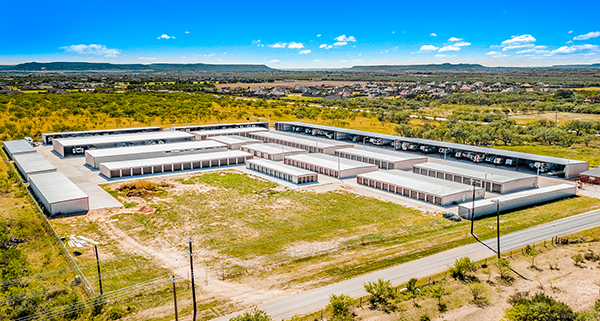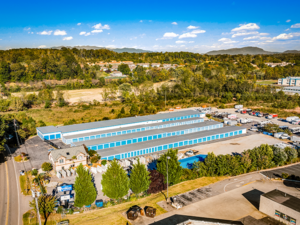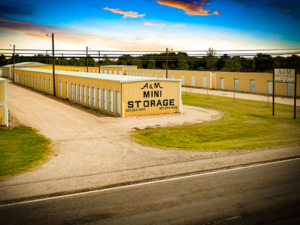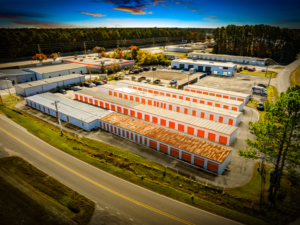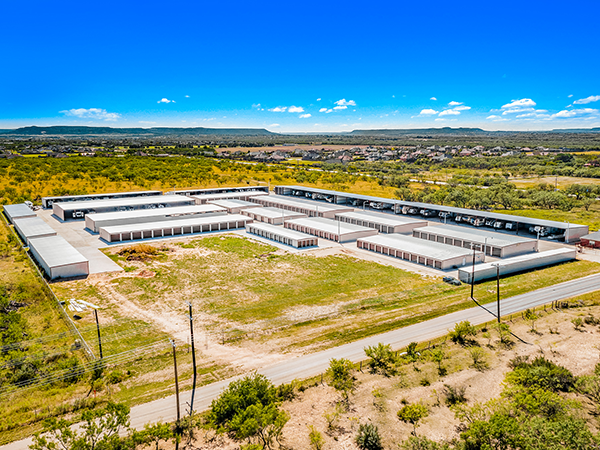
Is a Self-Storage Investment Right for Your Portfolio?
Did you know that around 10% of households currently use a storage unit? The demand for storage space means that you might want to consider adding a self-storage investment to your portfolio. Compared to retail, hotel, and residential properties, self-storage properties have minimal management and lower capital expenditures.
Return on investment and compound annual growth rate for self-storage property investment is expected to grow in the coming years and so is the annual growth rate. That means that this type of property investment offers great returns. According to Forbes, “From 2009 to 2018, self-storage facilities averaged an annual ROI of 16.9%. This number was higher than office, industrial, retail or apartments during that time.”
Many investors are getting in on the self-storage game as well. The buyer pool for self-storage properties is increasing at a drastic rate as commercial investors seek safe places to invest money post-COVID. So if you’ve been considering investing in a self-storage property, it might be time to get started.
Why a Self-Storage Investment is a Smart Move
What exactly makes self-storage investment a smart move? After you learn more about this type of property, you can talk to an experienced broker about whether it would be a good addition to your portfolio.
- Self-Storage is Always in Demand: When the economy is booming, households take longer sabbaticals and move homes, requiring self-storage. During a downturn, people may be returning to school or downsizing, which means they may turn to self-storage as they adjust their housing situations. Construction lag times have contributed to a lack of recent development, so we are now seeing undersupplied markets, especially in the Southeast.
- ROI is More Straightforward: While self-storage properties aren’t quite a completely passive investment, there are fewer hands-on challenges than with other types of commercial real estate. Owners and property managers don’t have to deal with unexpected calls from tenants to resolve issues like leaky pipes or clogged toilets. That simplifies things when calculating your return on investment.
- Low Expenses: Unlike some types of investment properties, self-storage capital expenditures are low. Lower expenses are always an advantage, and this is yet another reason that cash flow can remain steady even as other factors change.
- Financing for Self-Storage Investment Properties Is Accessible: Self-storage properties have shown themselves to be something of a “COVID-resistant” asset, so lenders are eager to get them on their books. So, if you’re interested in exploring this area of industrial property investment, you probably won’t have any issues finding financing at a competitive rate.
- Self-Storage Properties Provide a Reliable Stream of Income: Self-storage facilities vary widely in size, but the average number of units in a facility is around 500. With this many separate spaces for rent, your income stream is not dependent on collecting rent from just a few tenants. So if a tenant or two leaves, your cash flow will not be dramatically altered. Plus, with self-storage units in such high demand, it is not difficult to find new tenants to replace the ones that leave.
- Self-Storage Rent Increases Have Less Pushback: Inevitably, rent increases will be necessary to keep your self-storage investment profitable in changing markets and tenants bristling against these rent increases can seem unavoidable. But the advantage of self-storage is that leases tend to be shorter. Most tenants will be on a month-to-month schedule, which makes it easier to raise rents more frequently without tenants pushing back against the increase. Being able to adjust rent more often and more easily also allows you to keep your income stream pretty consistent if you experience frequent tenant turnover.
The Basics of a Self-Storage Investment
If you’re new to the world of self-storage investment, you might have questions about the ins and outs of investing in this type of property. There are obviously many details that go into any kind of property investment (including self-storage) so we’re just going to give you the basics so you have a place to start when considering whether or not it should be part of your portfolio.
Types of Self-Storage Properties
- Class A: Built in the 2000s or more recently in ideal neighborhoods that are home to potential occupants.
- Class B: Built in the 1980s or 1990s and owned by “mom and pop” companies rather than national chains. These facilities should have stable numbers as far as occupancy rates.
- Class C: Much older buildings that have more maintenance issues. These may be in less desirable locations, making them a possibly risky investment.
What to Look for in Self-Storage Investment Properties
When you are looking to invest in a self-storage property, there’s a long list of things to consider when finding the right one.
- Location: Usually, 90% of your customer base will be within a 1-5 mile radius of the storage unit. Is the area growing or shrinking? Is the city expanding in the area or away from the area? If you’re building a facility from scratch, or even buying an existing one, it will be a safer investment if the homes and apartments in your area are small. That means the people living in them will have a bigger need for additional space to store their belongings, which is where your self-storage facility can help.
- Size: Facilities vary in size and can range from 10,000 square feet to 100,000 square feet or more. The average rentable square footage is around 46,000 SF. A facility will take up anywhere from 2.5 to acres of land. The size of the self-storage facility will dictate many things including the cost of maintenance, property taxes, and management.
- Square Feet Per Capita: How many square feet of storage space is there already per person in your market? A higher number per person, within a facility you’re considering investing in, or in your market as a whole, might mean in terms of supply and demand, there’s not enough demand.
- Price Per Square Foot: Look at this metric to determine the level of competition in your area. If the prices per square foot in all of the facilities that you’re considering investing in are high, that’s another sign of healthy demand.
- Types of Units in the Facility: Different customers have different needs when it comes to how much they need to store and how much space it will take up. So look at facilities that have a mixture of different unit sizes. Also, consider whether or not the facility has any climate-controlled units. Some self-storage units are climate-controlled so that some valuable items are protected from heat, cold, or moisture. Having climate-controlled units will open up your customer base and bring new tenants in, but the HVAC and other systems that control the climate will require more overhead and maintenance.
- Management: Is the property managed by the owner or a management company? Are you going to self-manage or hire someone?
- Occupancy Rates: If the occupancy rates in the storage facilities in your area are in the 90-100% range, you can safely assume you’re looking at high demand. Whichever route you choose, if the vacancy rates are low, you can be confident you’ll find customers. If you’re investing in a facility, you’ll want a high occupancy rate.
Ways to Get Started in a Self-Storage Investment
If you want to invest in a self-storage facility, there are a few ways you can get started. Of course, we’d recommend consulting with an expert in the industry before making any decisions, but there are three main ways to get into the self-storage market.
Invest in a Self-Storage Real Estate Investment Trust
If you’re not already familiar, a Real Estate Investment Trust (REIT) is a company that invests at least three-quarters of its assets from real estate, derives at least 90% of its income from real estate, and distributes dividends from that income to shareholders. A self-storage REIT does just that specifically with self-storage investment.
Going through a self-storage REIT and investing with an established brand is the most straightforward way to get involved in self-storage real estate investing. It is also the most passive way to get into this type of property investment. Going through a REIT also offers a good return on assets. The REIT takes care of the overhead and administration.
Buy an Existing Self-Storage Facility
If you want to have an approach that is more hands-on than going through a REIT, you can invest in an existing self-storage facility that is performing or has the potential to perform well. There is more work upfront as far as doing research and due diligence. Also, you’ll have to decide how to handle maintenance and administration. It will be your responsibility to nail down metrics like:
- Cap rate
- Net operating income
- Expenses
- Current real estate taxes
- Property insurance
- Management expenses
- Advertising
- Other operating expenses
Build a New Facility
This is the most expensive and labor-intensive option and not a good fit for an investor seeking passive income. You’ll have to start with finding the land for the facility, preferably in an area with high demand and low vacancy rates for existing storage units. Next, you have to confirm that the land is suitable for building at least a one-story — if not a multi-story — facility. Lastly, there’s permitting, zoning, and going through all of the steps of the real estate development timeline.
Consult an Expert
When you’re ready to have a conversation with a broker about self-storage investment, the team at Sands Investment Group can help. We have facilitated transactions of many self-storage facilities across the country, ensuring that investors not only find the right opportunity but get the best deal when adding to their portfolio.
Our experts on the Self Storage Team can discuss all the factors and considerations in investing in a storage property and help you identify the listings that meet your goals. If you’re ready to get started in self-storage investment and make purchase a self-storage property, our team is ready to assist with the growth, expansion, and management of your portfolio. Contact us at 844.4.SIG.NNN or check out our current self-storage listings to get started with your next self-storage investment.
By submitting your information and signing up for email updates, you agree to SIG Online Terms of Use

